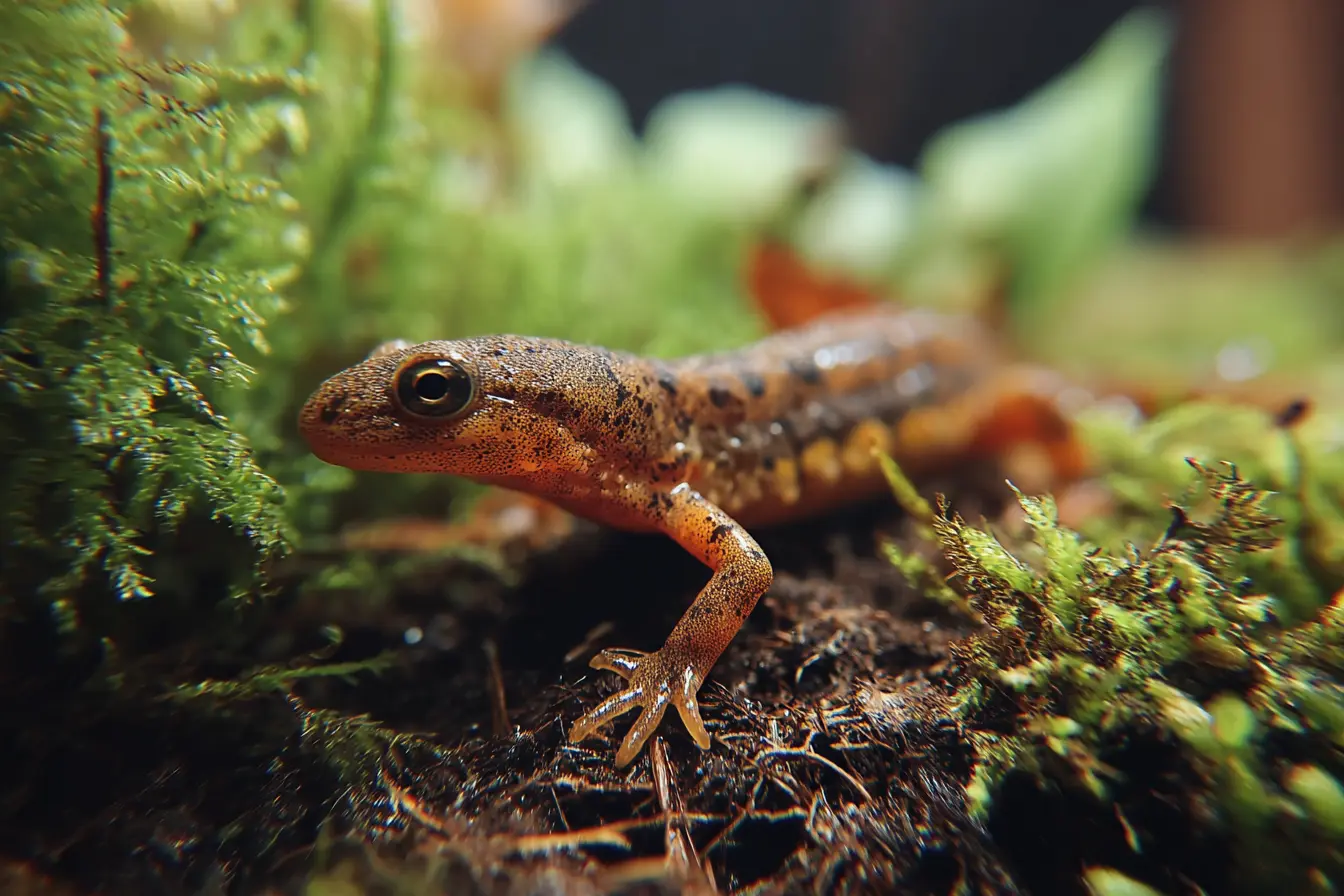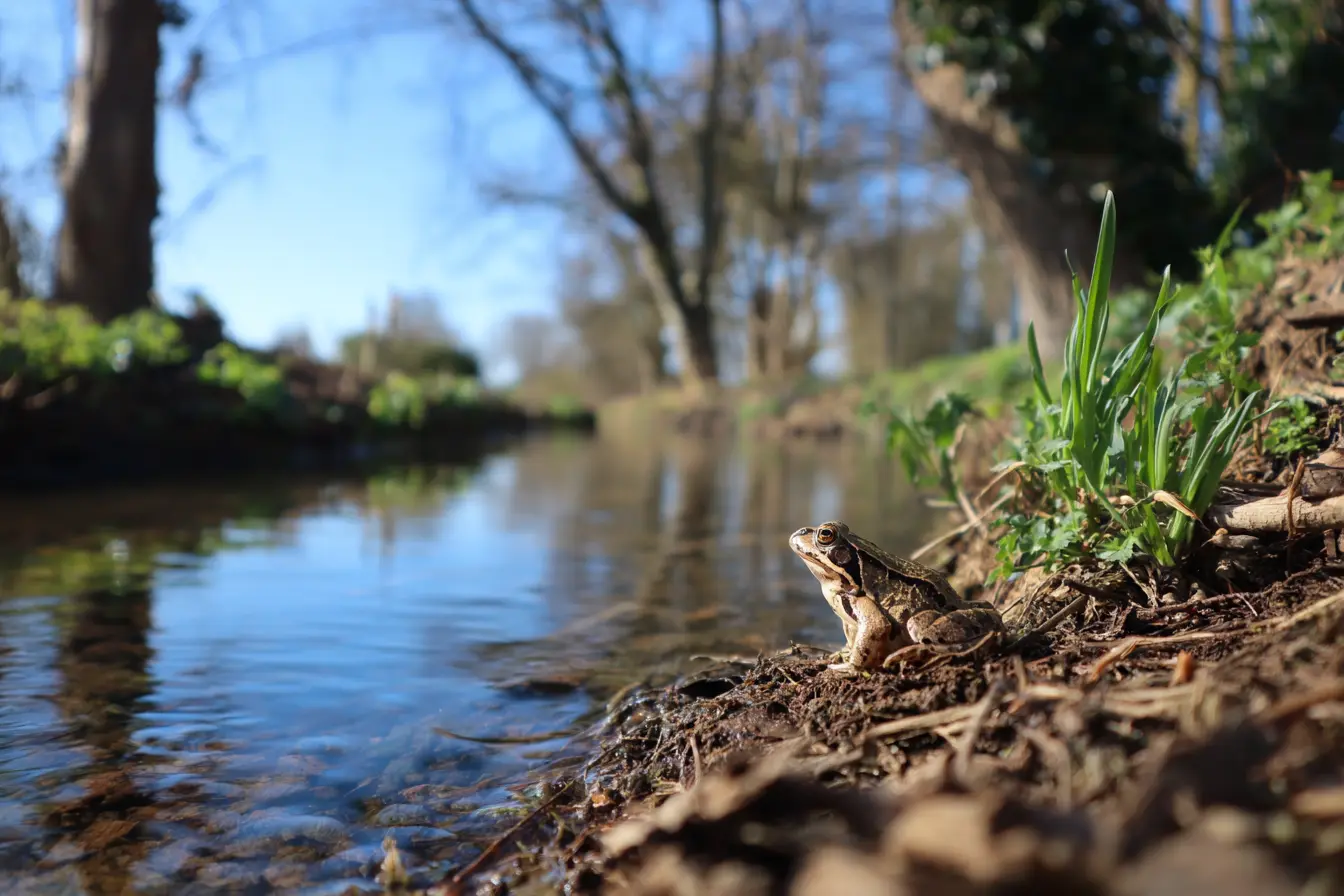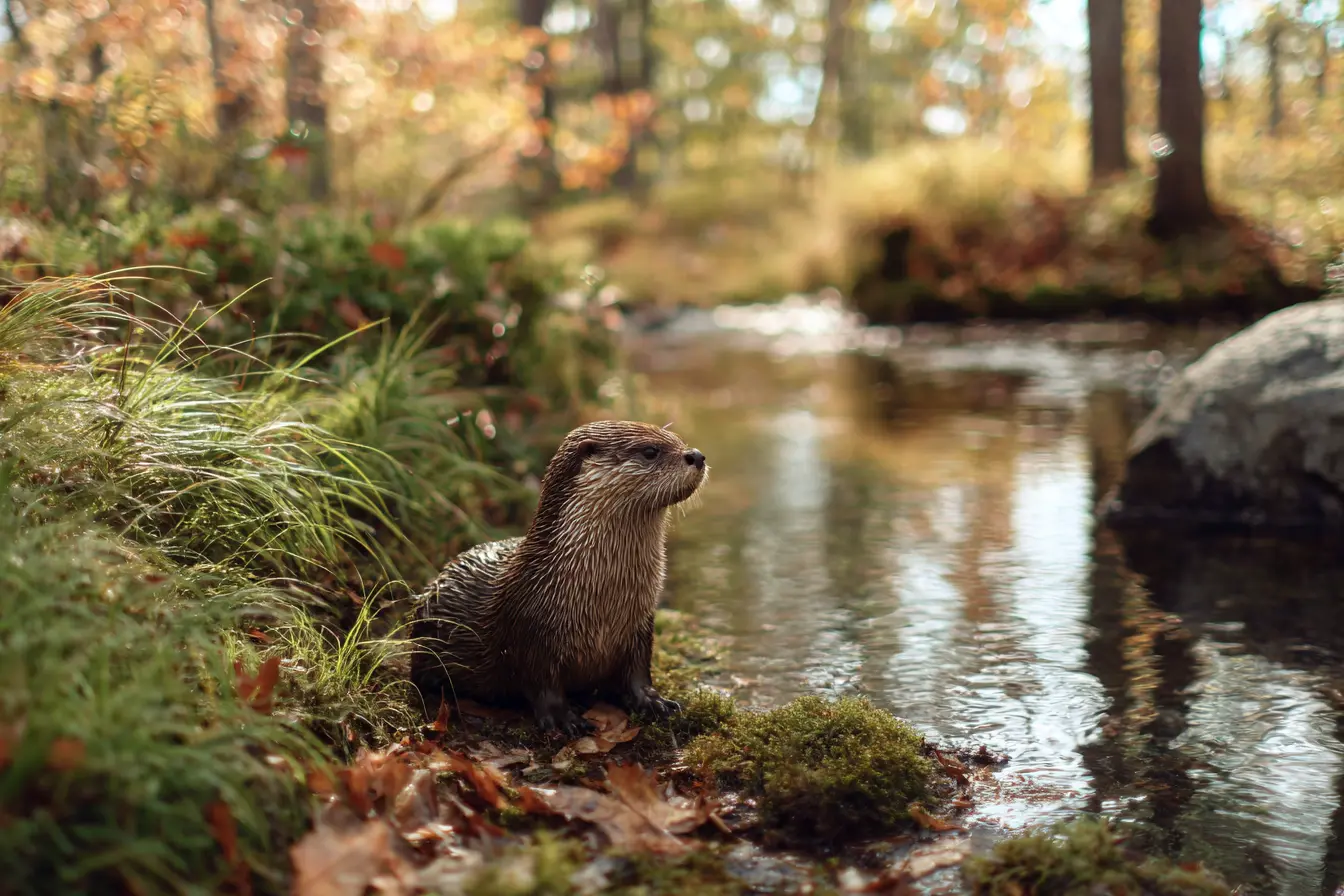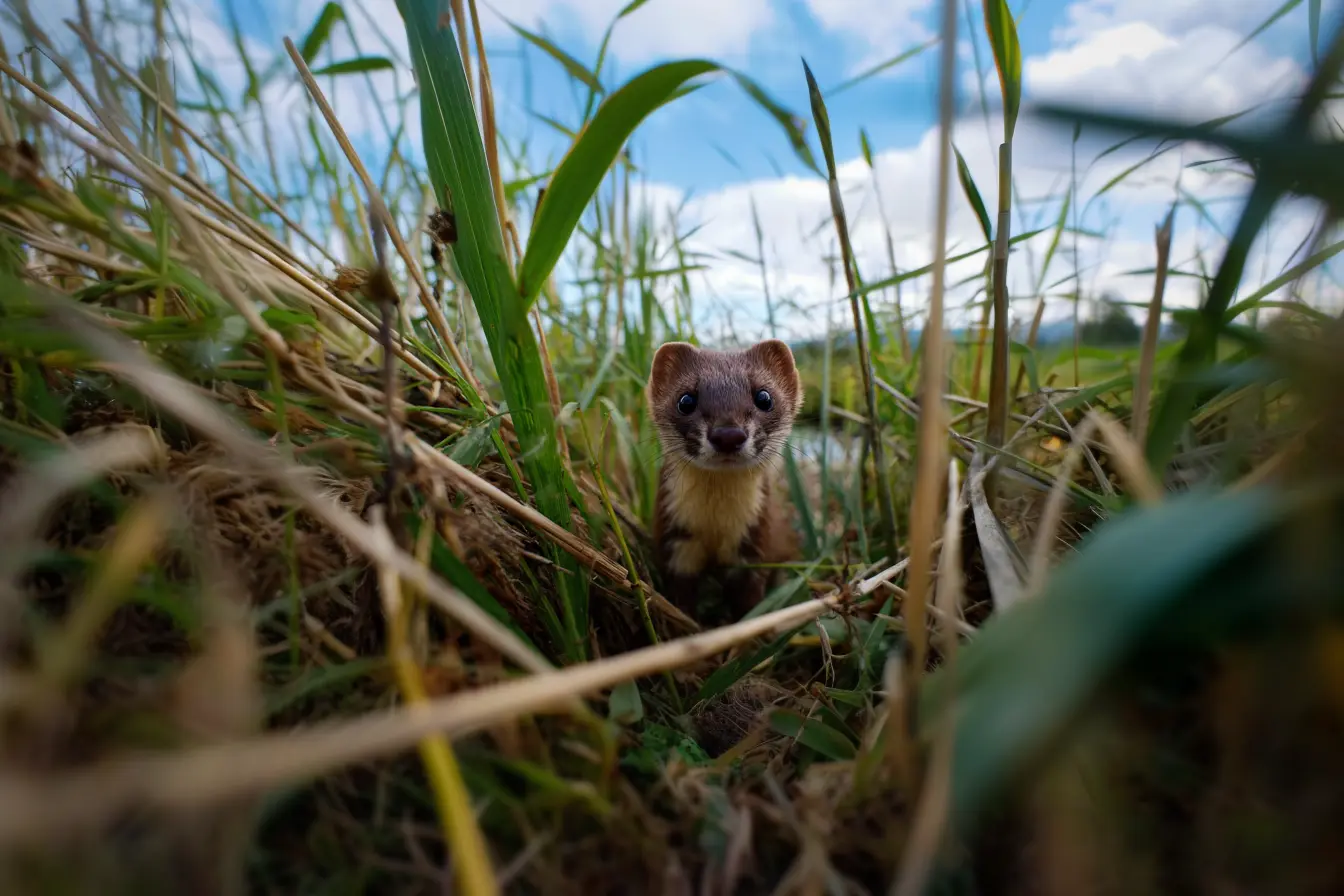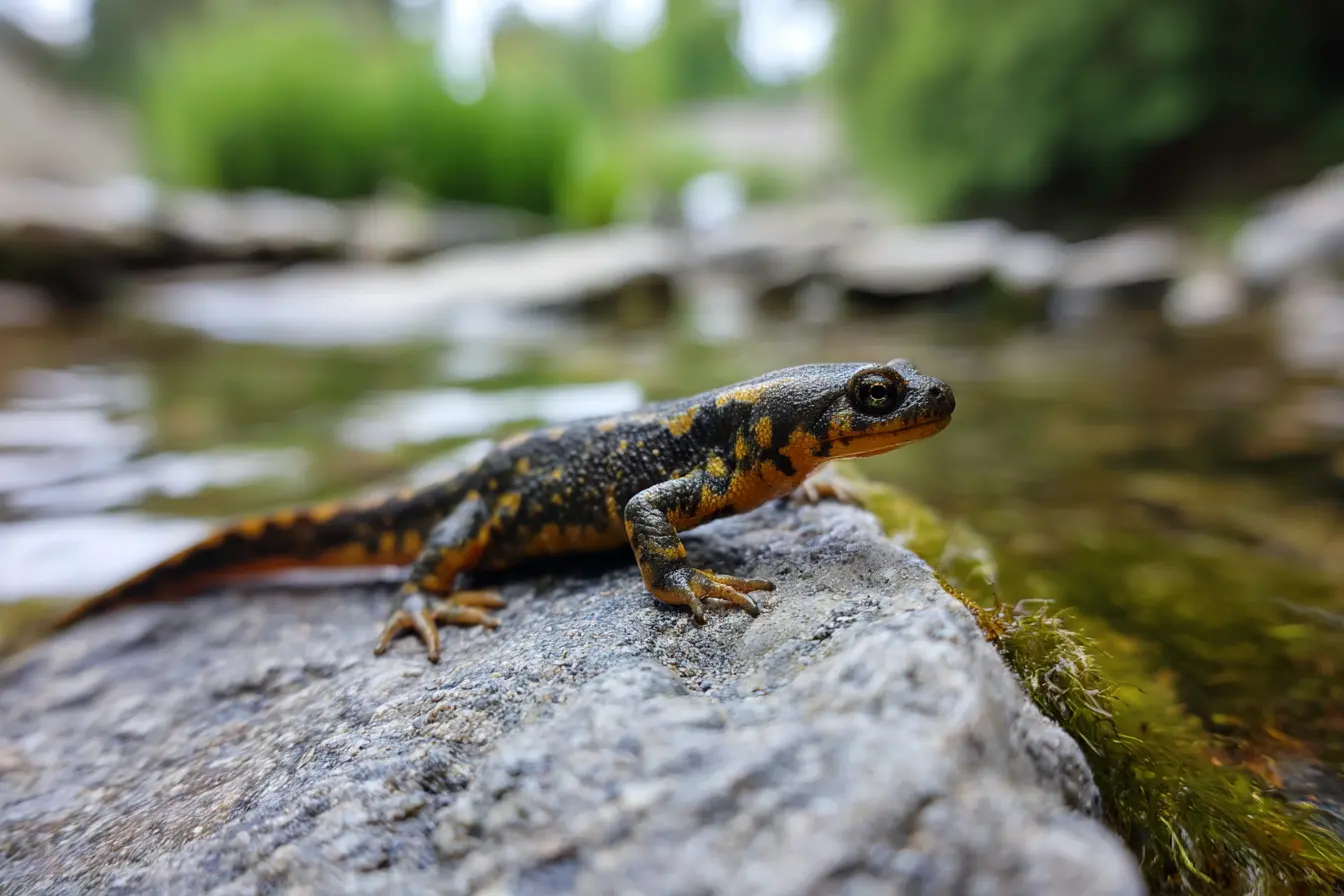
Great Crested Newts in the UK
The great crested newt (Triturus cristatus) is the largest and rarest of the UK’s native newt species. With its distinctive appearance, complex life cycle, and strict legal protection, this amphibian holds a special place in the UK’s biodiversity landscape. This blog post explores everything you need to know about great crested newts — from identification and habitat, to legal protections and conservation efforts.
Identification and Appearance
The great crested newt is notable for its size and striking features. Adults can reach lengths of up to 17 cm, making them significantly larger than other native species like the smooth and palmate newts.
Key characteristics
- Skin: Dark brown to black, with a rough, warty texture.
- Belly: Bright orange with irregular black blotches, unique to each individual like a fingerprint.
- Crest: Males develop a jagged crest along their backs and tails during the breeding season (spring), giving the species its name.
- Tail: Males also show a white-silver stripe along the tail, which becomes more visible in water.
Distribution and Habitat
Great crested newts are found across England, Wales and lowland Scotland, though their range has diminished significantly over the last century due to habitat loss. England hosts the largest populations, with key strongholds in the Midlands and the south.
Preferred habitats
- Breeding ponds: Clean, unpolluted, and fish-free ponds with abundant aquatic vegetation.
- Terrestrial habitats: After the breeding season, newts move into surrounding terrestrial areas such as grasslands, woodlands, hedgerows, and scrub. They use logs, stones, and underground crevices for shelter.
Newts will typically remain within 250 metres of a breeding pond, but have been recorded travelling up to 1 km, particularly in fragmented landscapes.
Life Cycle and Behaviour
The life cycle of great crested newts involves both aquatic and terrestrial phases.
Seasonal behaviour
- Spring (Feb to April): Adults return to breeding ponds. Courtship displays take place, especially by males using their crests and tail fans.
- Spring to early summer (March to June): Eggs are laid on submerged plant leaves. Females carefully fold leaves around each individual egg.
- Summer (May to August): Larvae hatch and develop in water. Metamorphosis typically occurs by late summer.
- Autumn and winter (Sept to Jan): Adults and juveniles leave the pond and hibernate on land in frost-free refuges.
Juveniles can take 2 to 4 years to reach maturity, depending on environmental conditions.
Conservation Status and Legal Protection
The great crested newt is classed as a species of European conservation concern. In the UK, it is legally protected under several laws:
- Wildlife and Countryside Act 1981 (as amended)
- Conservation of Habitats and Species Regulations 2017 (as amended)
- UK Post-2010 Biodiversity Framework priority species
Legal implications
- It is illegal to intentionally kill, injure, capture, or disturb great crested newts.
- Their breeding sites and resting places (ponds, refuges, etc.) are protected.
- Development activities (e.g., construction, agriculture) that might impact newts or their habitat require a special licence from Natural England (or equivalent bodies in Scotland and Wales).
Surveying and Monitoring
Surveys are essential to determine the presence or absence of newts before any development project can proceed. These must be carried out by licensed ecologists.
Common survey methods
- Torchlight surveys at night during the breeding season.
- Bottle trapping to capture and release individuals.
- Egg searches for folded leaves with eggs inside.
- Environmental DNA (eDNA) testing, a non-invasive method to detect traces of newt DNA in pond water.
Timing is critical — most surveys must occur during the peak breeding season (mid-March to mid-June) under suitable weather conditions.
Threats
Despite legal protection, great crested newts continue to face several threats:
- Habitat loss and fragmentation: Urban development, intensive agriculture, and pond infilling have reduced suitable breeding sites and terrestrial habitat.
- Pollution: Pesticides, fertilisers, and road runoff degrade water quality.
- Fish introduction: Fish in ponds prey on newt eggs and larvae, disrupting breeding success.
- Climate change: Altered rainfall patterns can dry ponds prematurely or reduce connectivity between habitats.
Conservation Efforts
Conservation strategies focus on protecting existing populations and restoring habitat networks.
Key initiatives include
- Pond creation and restoration: Natural England and wildlife charities have supported large-scale pond creation projects.
- Habitat corridors: Enhancing connectivity between ponds and terrestrial refuges helps reduce fragmentation.
- District Level Licensing (DLL): A streamlined licensing system allowing developers to fund habitat creation and management off-site, rather than mitigate impacts on a site-by-site basis.
- Community engagement: Citizen science projects such as ‘PondNet’ and ‘Big Spawn Count’ raise awareness and gather valuable data.
How You Can Help
- Create wildlife ponds in your garden or community spaces, ensuring they are fish-free and shaded.
- Avoid disturbing wild newts, particularly during their breeding season.
- Report sightings to local wildlife trusts or biodiversity records centres.
- Support conservation groups like Amphibian and Reptile Conservation Trust or Froglife.
Conclusion
The great crested newt is a symbol of Britain’s rich but vulnerable amphibian heritage. While their future faces ongoing threats, there is also hope — through legal protection, habitat restoration, and public involvement, this remarkable species can continue to thrive in our landscapes.
Their presence is a sign of a healthy ecosystem, and by protecting them, we also safeguard a wider web of biodiversity. Whether you’re a conservation professional, a landowner, or a nature enthusiast, there is always something you can do to help.
Vets near you
Speciality vets
- Aquatics vet specialists
- Birds vet specialists
- Camelids vet specialists
- Cats vet specialists
- Cattle vet specialists
- Deer vet specialists
- Dogs vet specialists
- Equines vet specialists
- Exotic vet specialists
- Goats vet specialists
- Pigs vet specialists
- Poultry vet specialists
- Sheep vet specialists
- Small Mammals vet specialists
- Wild vet specialists
